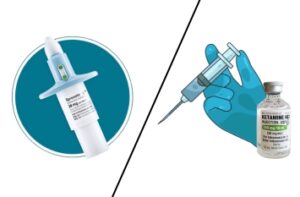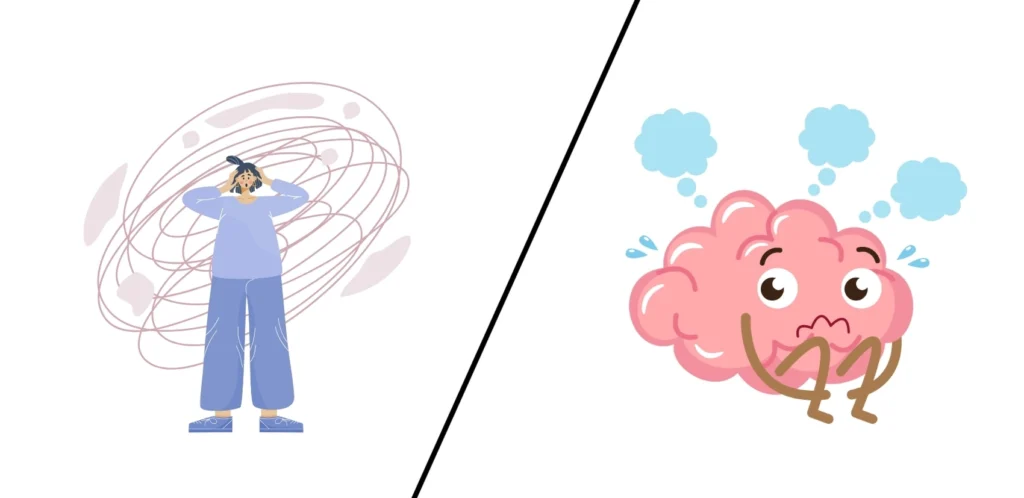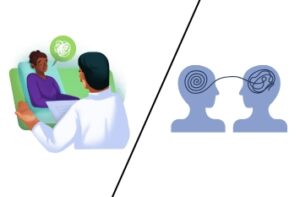
Spravato vs Ketamine Infusions. What’s the Difference
Spravato vs Ketamine Infusions. What’s the Difference If you’ve been exploring treatment options for depression that hasn’t responded to medication, you may have come across

When someone is struggling with anxiety, especially something like generalized anxiety disorder (GAD), panic disorder, or social anxiety, it’s entirely understandable to look for something quick. Medications that offer relief fast can feel very appealing. One of those options is Xanax (generic name alprazolam), a benzodiazepine that many people have heard of. And yes, in certain short-term situations, Xanax can play a role, but it is not usually the best first-line long-term solution. In fact, relying on it as the “go-to” has a number of serious downsides. Belo, we’ll lay out the reasoning and the evidence.
Xanax works by enhancing the effect of a neurotransmitter called GABA in the brain, which essentially dampens excitability in nerve cells and results in a calming/sedating effect. Because of its relatively rapid onset and short half-life, it can produce relief of anxiety symptoms fairly quickly. Because of that, it can be useful for acute situations: say, a severe panic attack, or a particularly anxiety-provoking event. But the fact that it works fast is simultaneously part of why it carries risk.
The evidence and clinical guidelines are fairly clear: benzodiazepines (such as Xanax) should generally not be used as the main long-term treatment for chronic anxiety conditions. For example:
In short, yes, for some short-term, situational use, Xanax can be part of a treatment plan, but for ongoing, primary treatment of anxiety, other modalities (therapy, SSRIs/SNRIs, lifestyle interventions) are far more recommended.
Here is where the risk becomes really important.
Let’s connect the dots:
This is why many experts caution: using Xanax (and similar benzodiazepines) as the primary long-term treatment for anxiety is often not ideal. It can create more problems than it solves.
At Perfect Balance, here’s how we approach anxiety in a more balanced, long-term sustainable way:
Especially modalities with strong evidence: e.g., Cognitive Behavioral Therapy (CBT), exposure therapy (for panic or social anxiety), skills training for emotion regulation. Numerous guidelines place these first. For example, the Anxiety & Depression Association of America (ADAA) recommends these approaches.
4. Monitoring & planning for the long-term
One of the most overlooked aspects of managing anxiety is preventative mental health care. Many people only seek help once their symptoms become disruptive, such as frequent panic attacks, chronic worry, insomnia, or physical symptoms like chest tightness. But anxiety rarely appears overnight. It often builds slowly over time due to stress, unresolved emotional issues, lifestyle habits, or environmental pressures. Preventative care aims to intervene early, build emotional resilience, and reduce the likelihood of symptoms escalating to a point where medications like Xanax feel necessary.
Preventative mental health care prioritizes spotting warning signs early, such as irritability, sleep changes, avoidance behaviors, or increasing worry. Addressing these symptoms before they become chronic can significantly reduce the risk of developing severe anxiety disorders. Research consistently shows that individuals who engage in early therapy or stress-management techniques experience better long-term outcomes than those who wait until symptoms peak.
Just as people visit doctors for annual physicals, regular mental health check-ins can serve as emotional “maintenance.” Therapy doesn’t have to begin only when someone feels overwhelmed; it can also function as a preventive tool.
Engaging in therapy proactively can greatly reduce dependence on fast-acting medications later.
Preventive care also teaches long-term coping strategies that reduce the intensity and frequency of anxiety symptoms. These tools can include:
These skills empower individuals to manage anxiety internally, decreasing the instinct to seek immediate pharmacological relief.
Preventative mental health isn’t just psychological, it’s also lifestyle-driven. Several habits can drastically reduce anxiety risk when practiced consistently:
These foundational habits build resilience and improve long-term emotional stability.
If you’re a patient (or advising one) and Xanax has been brought up, consider asking:
In short, while Xanax can provide fast relief for anxiety/panic, it is not the ideal “go-to” long-term strategy for most people. The risks of dependence, rebound anxiety, withdrawal, cognitive/psychomotor side-effects, and even addiction are substantial and well-documented. Patients and providers should view it as a tool with a limited, cautious role, not as the default solution.
At Perfect Balance, our goal is to help you build sustainable mental wellness, not just temporary relief. That means combining therapy, skill‐building, lifestyle change, and judicious use of medication only when appropriate, with a clear plan. If you or a loved one is relying on Xanax (or another benzodiazepine) for anxiety, it may be wise to review the plan with your provider and ask whether a more balanced approach might serve you better in the long run.

Spravato vs Ketamine Infusions. What’s the Difference If you’ve been exploring treatment options for depression that hasn’t responded to medication, you may have come across

Counseling vs. Therapy: What’s the Difference, and Which One Do You Need? When You’re Ready to Seek Support When you’re ready to seek support for

Where to Get TMS Therapy in Frisco TX. What Sets Perfect Balance Psychiatric Services Apart If you’re living with depression that hasn’t improved with medication,
